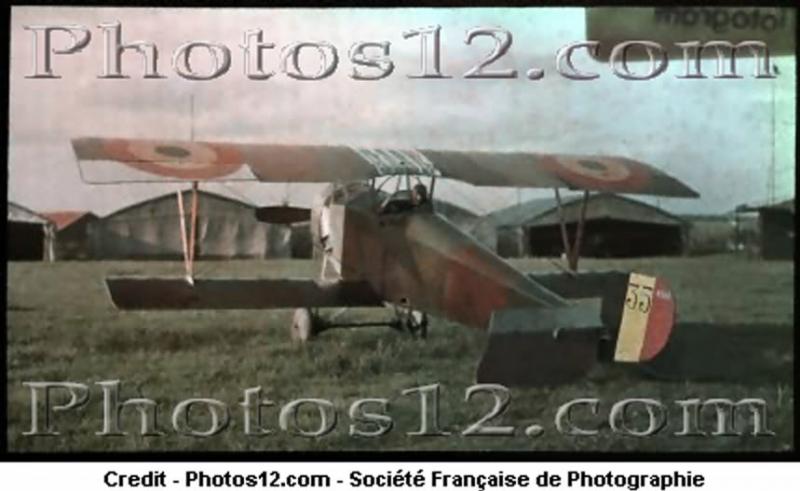Hello Blake,
Thank you very much for your comment. Please understand, one must first see this fabuolus image in full resolution and fully color corrected with light and dark areas addressed as well, before drawing any conclusions. It is a copyrighted image and it is rather
pricey, so most unfortunately, I am unable to do that here. But kindly trust me, there is some invaluable Nieuport Factory camouflage paint information present in this most colorful original.
What the corrected image depicts is yes; a "
mécanicien painted" camouflage, that although also spray applied, lacks the artistic stylizations and finnesse of those from the Nieuport factory. However:
the colors are identical! Also it's very clear in the full resolution image, the port lower wing has the Nieuport Factory applied camouflage
and the fuselage's left side is painted in the precise sequence of colors found on the top surface of this left inferior flying surface.
From wing tip to fuselage the wing's sequence is identical to that of the fusleage from the cowling rearwards:
1) A MISTED red over brown,
2) LIGHT straw-green,
3) A full (heavy) application of clay red-brown and lastly
4) The "chocolate" or Earth brown.
This
misting found on the first panel on both wing and fuselage gives the impression there are THREE shades of brown with but one green. What is lacking on the fuselage's paint application is the blending of all the colors creating a "mired" or nondescript finish as was that from the Factory. But, the lower left wing top surface clearly shows this effect to great advantage.
Further, in email exchanges with Mr. A. Toelle, he stated to me there were Nieuport 10's in the Nieuport "Dead Leaf" of "Red, Ocher, Green Camouflage."
I believe both of these are names for the same type of camouflage paint finish. That last comment of mine may be a bit much of a statement, but we do need to recall, this camouflage was used from (apparently) February 1916 through May 1916, barely four months before being replaced in June with the overall aluminum dope appearing in service by very early summer. A relatively short duration expressly developed for use over the Verdun battlefields.
In addition, IF the right lower wing is also a replacement with the factory-applied camouflage finish, visible inboard of the "V" strut is what is obviously a much darker shade of green, a cooler and more blue "conifer green" as I call it. This darker green color is also visible on the starboard elevator, in the rudder's shadow.
I feel I must again reiterate, Verdun (as elsewhere) due to the innumerable shell craters, was comprised of a predominantly brown palette, both earth brown and a
clay red-brown with comparatively little vegetation visible. This coincides with Mr. Toelles "Windsock" comment that of the top surfaces of early Nieuport camouflage being comprised of 30% "light" (greens as I have described) and 70% a "dark color" (clearly, the two browns.)
It is these ratios that I am emphasizing as key with this "new" conceptual interpretation of this camouflage. I feel this opinion to be fully backed with both color images. That said, I would very much like to see the highest resolution possible copies of the N940 Autochomes, as then the application of he two greens will be more certain.
Kind Regards,
Paul

